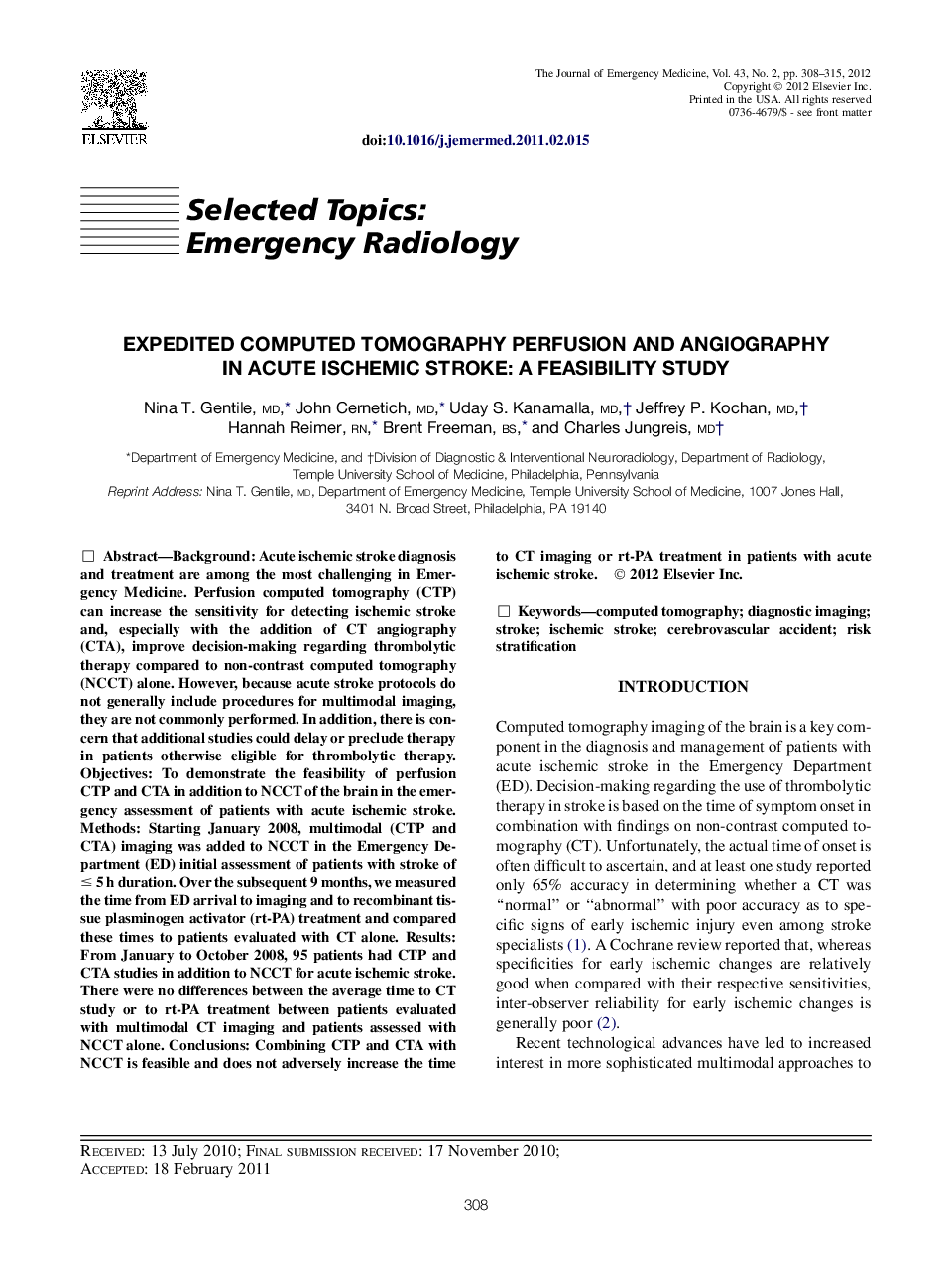| Article ID | Journal | Published Year | Pages | File Type |
|---|---|---|---|---|
| 3249500 | The Journal of Emergency Medicine | 2012 | 8 Pages |
BackgroundAcute ischemic stroke diagnosis and treatment are among the most challenging in Emergency Medicine. Perfusion computed tomography (CTP) can increase the sensitivity for detecting ischemic stroke and, especially with the addition of CT angiography (CTA), improve decision-making regarding thrombolytic therapy compared to non-contrast computed tomography (NCCT) alone. However, because acute stroke protocols do not generally include procedures for multimodal imaging, they are not commonly performed. In addition, there is concern that additional studies could delay or preclude therapy in patients otherwise eligible for thrombolytic therapy.ObjectivesTo demonstrate the feasibility of perfusion CTP and CTA in addition to NCCT of the brain in the emergency assessment of patients with acute ischemic stroke. Methods: Starting January 2008, multimodal (CTP and CTA) imaging was added to NCCT in the Emergency Department (ED) initial assessment of patients with stroke of ≤ 5 h duration. Over the subsequent 9 months, we measured the time from ED arrival to imaging and to recombinant tissue plasminogen activator (rt-PA) treatment and compared these times to patients evaluated with CT alone.ResultsFrom January to October 2008, 95 patients had CTP and CTA studies in addition to NCCT for acute ischemic stroke. There were no differences between the average time to CT study or to rt-PA treatment between patients evaluated with multimodal CT imaging and patients assessed with NCCT alone.ConclusionsCombining CTP and CTA with NCCT is feasible and does not adversely increase the time to CT imaging or rt-PA treatment in patients with acute ischemic stroke.
